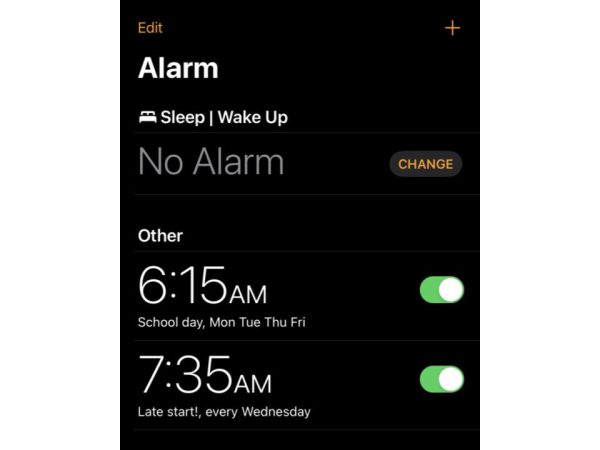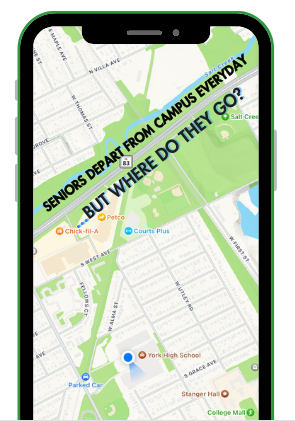Staff Editorial: Shift PARCC into reverse
During March and April, ten days of full instruction in English, and eight days in Math were lost in the name of standardized testing.
Based on the Common Core State Standards (CCSS), the onslaught of PARCC (Partnership for Assessment of Readiness for College and Careers) testing has taken over York and public schools across the country.
All part of the shared goal by teachers, administrators, and politicians to raise the educational standards of U.S. students, the PARCC tests are replacing the myriad of different tests that each state uses in their own educational systems.
For Illinois, this includes ISATs, MAP tests, and PSAE taken by juniors in high school.
At York this year, the PARCC test was only administered to freshman, along with grades 3-8 being tested across the district.
“PARCC replaces both PSAE at the high school and ISAT in grades 3-8,” said Charles Sprandel, Director of Research, Assessment and Quality Analysis. “We gave the ACT separately on March 3, so that every junior would have the opportunity to take the college entrance exam.”
According to Dr. Covino, Assistant Principal for Curriculum and Instruction, the administration is preparing for both sophomores and juniors to be tested beginning next year, when students in grades 3-11 district-wide will be tested.
That’s a lot of testing, and no one in the Elmhurst community is thrilled; however, this is a state-mandated test–and an expensive one at that.
Illinois spent nearly $30 billion on K-12 public education in the 2013-2014 school year, according to the Illinois State Board of Education.
It’s fair to say that the PARCC tests will likely drive up costs in the future because of the massive scale–which presents a problem.
With the state being in a severe fiscal crisis, both politicians and educators will have a decision to make.
If the PARCC tests take up a larger portion of the budget granted for standardized testing, do school districts cut funding for other programs (fine arts or practical arts electives, for example), or do property taxes shoot up to cover the increased budget?
Either of these options would certainly create a firestorm in a town that deeply cares about the quality of education across the board, yet already suffers from high property taxes.
While many members of the Elmhurst community oppose the PARCC test, along with other stakeholders across the State, some argue that individually abstaining is not the best answer.
An editorial by the Chicago Tribune suggested that the PARCC tests are the best out of bad options, and parents should not be writing notes to teachers asking to have their students exempted from testing. To purposely abstain from state testing for some reason can potentially cost the state millions of dollars in lost funding. The Tribune is correct in that regard.
Sadly, the monetary cost is only one of the problems with the test.
With up to two weeks lost in instructional time, the English and Math Departments have been forced to consolidate and cut out portions of curriculum, and students in AP classes will be hit especially hard, as those tests have fixed dates before the end of the school year.
Many community members say that the sheer volume of new testing will create a need for massive change in curriculum, but Dr. Covino, says that “York will not become a testing factory.”
Although the administration maintains that there will be no large-scale preparation for the test, one has to wonder if that will change once a multiyear indicator of progress begins to form.
One also has to wonder if colleges will begin using the PARCC test results in a few years as another component of admission.
Regardless of the test’s future, the environment at York is deeply affected by the PARCC tests–even for those not involved in testing.
Although some teachers and students embrace the block schedule, during which they prepare for only four classes each day instead of seven, students across every grade level are upset at the block schedule, where they have to sit through 100-minute classes often filled with lectures, notes, and activities that only seem to prolong the school day.
Even upperclassmen joined in the criticism of the schedule, commenting on the struggle to keep focus, especially at the end of the day.
“It’s impossible to sit and stay engaged for that long,” said Annie Nyberg, senior.
It doesn’t take more than simple psychology to realize that students are at their best when they aren’t stuck in class sitting down and listening to a lecture for twice as long as a regular class period.
Naturally, many freshmen reported that they were burnt out by multiple block schedule periods and then having to go test in the afternoon. In addition, there were some complaints about the tests themselves.
“The format of the tests was confusing and too complicated,” said freshman Zorian Schiffman.
Despite that many professionals and politicians claim that the tests will better prepare the next generation of American students for the future and competition with international students, students, parents, and educators across America are skeptical to say the least.
The high cost of administering the PARCC tests will likely force school districts to slash funding for other departments, or raise property taxes to compensate.
Let’s not forget that, for many students, the testing schedule and environment can be a drain, both for those testing and not, despite the tireless work of administrators and teachers to maintain the learning environment throughout the school day.
We have to ask ourselves if standardized testing is the centerpiece to fixing America’s public education system. If the PARCC tests continue, it appears that will be the case.
In the words of Dr. Covino, perhaps we should think twice before turning school into “testing factories.”












